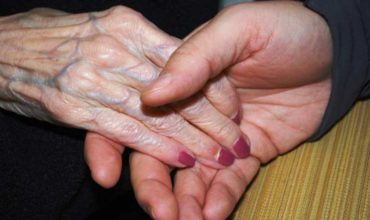Whether you are looking for information for yourself or for a loved one, it is important to understand what long-term care is and how it pertains to you. There are many types of services and resources available in your community. Having a better understanding of long-term care will help you know which ones best serve your needs.
Definitions and Need for Long Term Care
Long-term care is a range of services and supports you may need to meet your health or personal needs over a long period of time. Most long-term care is not medical care, but rather assistance with the basic personal tasks of everyday life, sometimes called “Activities of Daily Living,” such as:
- Bathing
- Dressing
- Using the toilet
- Transferring (to or from bed or chair)
- Caring for incontinence
- Eating
Other common long-term care services and supports are assistance to complete what is called Instrumental Activities of Daily Living. These are household and other tasks that you may do every day, such as:
- Housework
- Preparing and cleaning up after meals
- Taking medication
- Shopping for groceries or clothes
- Using the telephone or other communication devices
- Managing money
- Caring of pets
- Responding to emergency alerts such as fire alarms
Service Delivery
If you need services, you may get them from family and friends, from agencies with certified staff, or by hiring help on your own. For many, a blended approach to long-term care is needed. Visit the sections below to find out more about methods of service delivery for you or a loved one.
Caregivers
A caregiver can be your family member, partner, friend, or neighbor who helps care for you while you live at home. About 80 percent of care at home is provided by unpaid caregivers. Caregivers provide an array of emotional, financial, nursing, social, homemaking, and other services.
On average, caregivers spend 20 hours a week giving care. More than half of caregivers (58 percent) have intensive caregiving responsibilities that may include assisting with a personal care activity, such as bathing or feeding.
Information on caregivers show that:
- About 65.7 million people in the US (one in four adults) were unpaid family caregivers to an adult or child in 2009.
- About two-thirds of caregivers are women.
- Fourteen percent of caregivers caring for older adults are hemselves age 65 or more years old.
Most people can live at home for many years with help from family and friends, and from other paid community support.
Traditional Model Services
Most paid long-term care services are purchased from home health or personal care agencies, assisted living, or nursing facilities. With these providers, you often do not get to choose who will come to your home to deliver services, and you may have limited say in when they visit.
Participant Directed Services
Participant directed services or participant direction is a way to provide services that lets you control what services you receive, who provides them, and how and when those services are delivered. This approach provides you with the information and assistance you need to choose and plan for the services and supports that work best for you. This includes being able to hire who you want to provide your services, and can include family and friends. But it also gives you the option of using a service agency, if you choose, such as a home care agency.
The difference is that you have choices and can make the decisions that work best for you. Many publicly funded programs that provide home and community services, such as Medicaid, are using this approach because it is more what people want.
In facility based services you generally don’t have the option to hire someone independently, but you should have choices about which staff members provide your care, the schedule you keep, and the meals you eat.
In home-, community- and facility-based settings, you should have the ability to participate or direct the development of a service plan, provide feedback on services and activities, and request changes as needed.
From the U.S. Department of Health and Human Services National Clearinghouse for Long-Term Care Information website.






